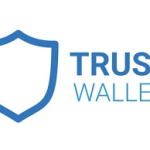Understanding Secure Crypto Wallets: A Comprehensive Guide
## Introduction
In the rapidly evolving world of cryptocurrencies, the importance of secure storage solutions cannot be overstated. A secure crypto wallet serves as a digital vault for holding, managing, and transacting cryptocurrencies. With an increasing number of digital assets being created and traded, understanding the various types of wallets, their functionalities, and security features is essential for anyone looking to navigate the crypto landscape safely. This article will provide an in-depth analysis of secure crypto wallets, exploring their types, workings, security practices, and key considerations for users.
## What is a Crypto Wallet?
A crypto wallet is a software program or hardware device that allows users to store and manage their cryptocurrencies. Unlike traditional wallets that hold physical cash, crypto wallets store public and private keys, which are essential for anyone looking to make transactions in the crypto space. The public key serves as an address to which others can send cryptocurrency, while the private key must be kept secret, as it provides access to and control over the funds.
### How Crypto Wallets Work
When a transaction occurs, it is recorded on a blockchain—a decentralized ledger that verifies and validates the authenticity of transactions. A crypto wallet does not actually store cryptocurrency; instead, it interacts with the blockchain to allow users to send and receive digital assets. The wallet keeps track of their balance through the use of public and private keys, enabling users to manage their holdings and initiate transfers.
## Types of Crypto Wallets
Crypto wallets can be broadly categorized into two main types: hot wallets and cold wallets. Each has its advantages and disadvantages concerning accessibility, security, and usability.
### 1. Hot Wallets
Hot wallets are connected to the internet and are designed for convenience and accessibility. They are ideal for frequent transactions, enabling users to quickly send and receive funds. Common types of hot wallets include:
– **Web Wallets**: These wallets are hosted on websites and can be accessed via a web browser. Examples include crypto exchanges like Coinbase and Binance, where users can store their cryptocurrency. While they are user-friendly, relying on third-party services presents security risks.
– **Mobile Wallets**: These are apps designed for smartphones, such as Trust Wallet and Mycelium. Mobile wallets are convenient for everyday transactions, allowing users to pay in-store or transfer funds on the go. Nevertheless, they are susceptible to malware and phishing attacks.
– **Desktop Wallets**: Often downloadable software for PCs or laptops, desktop wallets provide more control than web wallets but are still connected to the internet. Examples include Exodus and Electrum. While offering more privacy, they can still be compromised through malware.
### 2. Cold Wallets
Cold wallets are offline storage solutions designed for enhanced security. They are less susceptible to cyberattacks, making them ideal for long-term investors or those holding significant amounts of cryptocurrency. Common types of cold wallets include:
– **Hardware Wallets**: Physical devices such as Ledger Nano S or Trezor that securely store private keys offline. Users connect them to a computer or mobile device when they need to sign transactions. Hardware wallets are considered one of the safest options, as they keep private keys offline.
– **Paper Wallets**: A physical printout of a user’s public and private keys in the form of QR codes. Paper wallets are highly secure against cyber threats but can be lost or damaged easily, which poses a risk to accessibility.
– **Air-Gapped Wallets**: These wallets are completely isolated from any internet connection. Transactions are signed on the air-gapped device and then transferred to an online device using a QR code or USB. This method ensures maximum security but can be cumbersome for regular transactions.
## Security Practices for Crypto Wallets
Regardless of the type of crypto wallet, security is paramount. Here are several critical security practices every user should implement to safeguard their assets:
### 1. Use Strong Passwords
Using a robust, unique password for each wallet and related services is vital to prevent unauthorized access. Password managers can help create and store complex passwords.
### 2. Enable Two-Factor Authentication (2FA)
2FA adds an extra layer of security by requiring a second form of verification beyond just a password. This can include SMS codes, authenticator apps, or hardware keys.
### 3. Regular Software Updates
Keeping wallet software up to date protects against vulnerabilities and exploits. Developers frequently release updates that address security flaws.
### 4. Backup Your Wallet
Creating regular backups of wallet data can help recover funds in case of device loss or failure. Users should store backups in secure locations, such as encrypted drives or hardware wallets.
### 5. Beware of Phishing Attacks
Users should be cautious about unsolicited communications and verify the authenticity of links and messages claiming to be from wallet providers, as phishing scams are common in the crypto space.
### 6. Store Private Keys Securely
Keeping private keys offline or in a secure environment, such as a safe, can mitigate the risk of theft. Users should also avoid sharing private keys with anyone.
## Choosing the Right Crypto Wallet
Selecting the right wallet depends on individual needs, risk tolerance, and usage patterns. Here are factors to consider while choosing a secure crypto wallet:
### 1. Purpose and Usage
Determine the primary purpose of using the wallet—whether for daily transactions or long-term storage. Hot wallets are better for frequent trades, while cold wallets are more suitable for long-term investments.
### 2. Security Features
Evaluate the security features offered by wallets, such as 2FA, encryption, and backup options. Hardware wallets often offer the highest level of security.
### 3. Supported Cryptocurrencies
Different wallets support different cryptocurrencies. Ensure the wallet you choose supports the specific assets you intend to hold.
### 4. User Experience
The wallet’s user interface should be intuitive and easy to navigate, especially for those new to cryptocurrency. Reading user reviews can provide insights into usability.
### 5. Reputation of the Provider
Research the reputation of the wallet provider. Established and well-regarded companies tend to have better security practices and customer support.
## The Future of Crypto Wallets
As the cryptocurrency landscape continues to evolve, so too will the technology surrounding crypto wallets. Here are some potential developments we can expect in the coming years:
### 1. Enhanced Security Features
With the increasing importance of security, we may see further advancements in biometrics, multi-signature transactions, and AI-driven threat detection to protect users’ assets.
### 2. Integration with Decentralized Finance (DeFi)
Wallets will likely become more integrated with decentralized finance platforms, allowing users to manage assets while lending, borrowing, and trading directly from their wallets.
### 3. Improved User Experience
As crypto becomes more mainstream, wallets will likely prioritize user experience, introducing streamlined interfaces and customer support to cater to a broader audience.
### 4. Regulatory Compliance
As governments around the world establish regulations for cryptocurrencies, wallets may need to comply with legal requirements, leading to potentially new features or limitations for users.
## Conclusion

Secure crypto wallets are vital for anyone looking to safely store and manage their cryptocurrency holdings. By understanding the different types of wallets available and implementing robust security practices, users can significantly reduce the risks of theft or loss of funds. As the cryptocurrency ecosystem evolves, staying informed about wallet technologies and security measures will be crucial in ensuring the safe storage and management of digital assets. This not only protects personal investments but also contributes to the overall health and stability of the growing crypto market.


